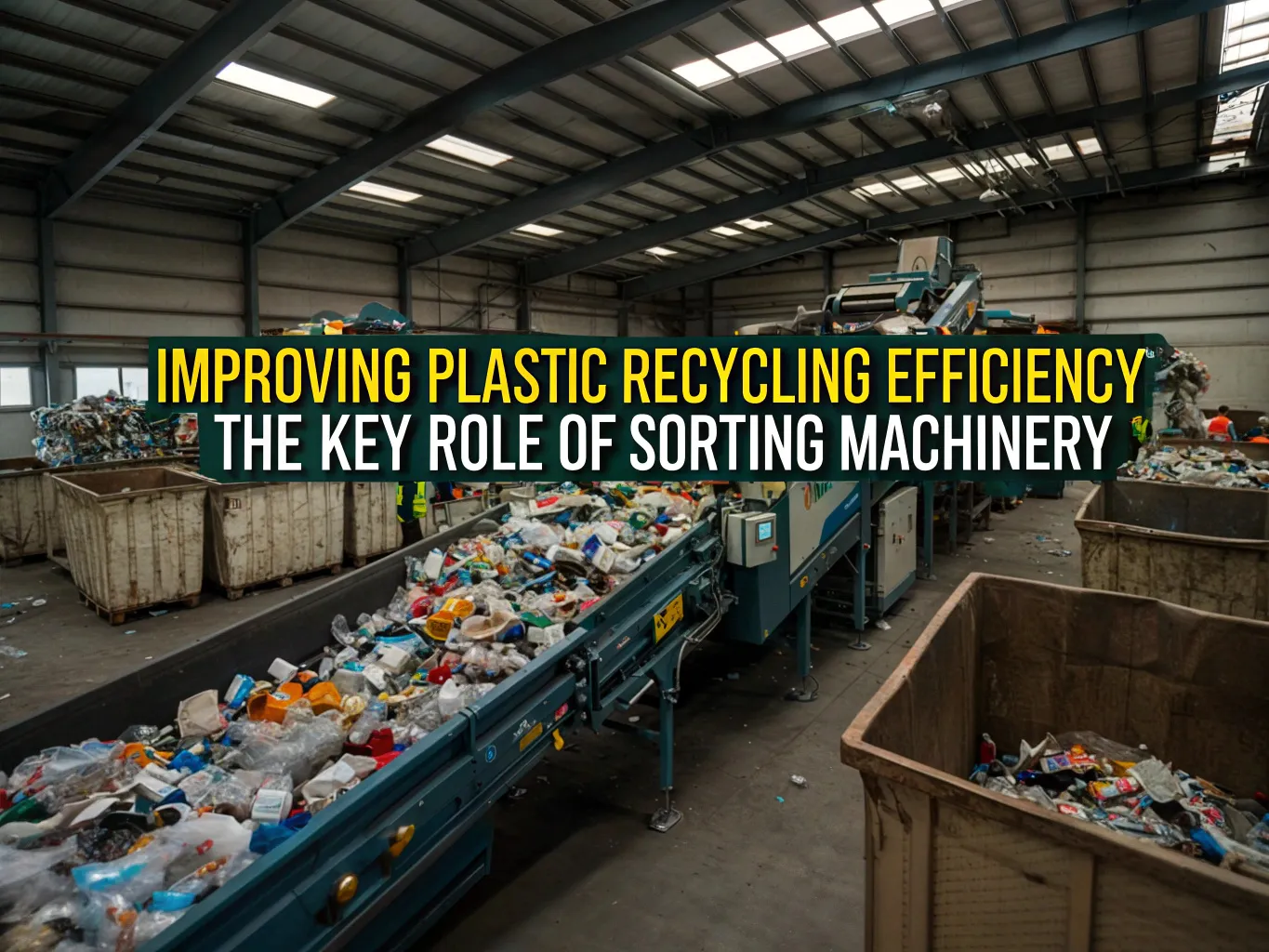Understanding Sorting Machinery in Plastic Recycling
Sorting machinery in the plastic recycling industry plays a crucial role in classifying different types of plastic materials based on attributes such as color, density, and composition. These machines simplify the sorting process through advanced technologies and processes, ensuring optimal material recovery efficiency.
Applications in Plastic Recycling
Sorting machines have a wide range of applications in the plastic recycling industry, including:
- Separating various types of plastics such as PET, HDPE, PVC, and PP for recycling.
- Removing contaminants and impurities from plastic waste streams, such as labels, bottle caps, and other non-plastic materials.
- Sorting plastics based on color and transparency to meet specific recycling requirements.
- Preparing sorted plastic materials for further processing, such as crushing, washing, and pelletizing.
Types of Sorting Machinery
- Optical Sorter Optical sorters use optical sensors and cameras to identify and sort plastics based on color, shape, and other visual characteristics.
- Eddy Current Separator Eddy current separators use magnetic fields to separate non-ferrous metals, such as aluminum and copper, from plastic waste streams.
- Density Separator Density separators exploit the density differences of plastics to separate lighter plastics from heavier materials.
- Air Classifier Air classifiers use air flow to separate plastics based on aerodynamic properties such as size and shape, effectively removing lightweight contaminants.
In-depth Understanding of Sorting Technologies
- Optical Sorter Optical sorters are advanced machines equipped with optical sensors and high-resolution cameras that can capture and analyze the color, shape, size, and other visual characteristics of plastic waste streams in real-time. With preset standards, the optical system can identify different types of plastics and accurately sort them. This technology efficiently separates various plastics such as PET, HDPE, and PVC and is an indispensable part of modern recycling facilities.
- Eddy Current Separator Eddy current separators utilize powerful magnetic fields to separate non-ferrous metals like aluminum, copper, and brass from plastic waste streams. The rotating magnetic fields induce eddy currents in the metals, causing them to be repelled and separated from the material flow, while plastics continue to pass through. This sorting method is critical for recovering valuable metals from mixed waste streams and aids in resource recycling and reuse.
- Density Separator Density separators use the density differences of plastics to effectively separate them through air or liquid flotation mechanisms. Lighter plastics, such as PET bottles and films, tend to float on the surface of water, while heavier materials like PVC or ABS sink to the bottom. By adjusting flow rates and buoyancy, density separators can precisely separate plastics, enhancing recovery efficiency.
- Air Classifier Air classifiers separate plastic materials based on their aerodynamic properties using controlled airflows. The machine generates a controlled air current that blows plastic particles through multiple chambers or channels. During this process, lightweight particles (such as films or foam) are lifted by the airflow and directed into separate collection bins, while heavier materials (like rigid plastics or contaminants) fall to the bottom. Air classifiers are particularly effective in removing lightweight contaminants from plastic waste streams, ensuring the purity and quality of the recovered materials.
These four types of sorting machinery play a vital role in modern recycling facilities, effectively separating and recovering plastics and other valuable materials from mixed waste streams.
Advantages of Sorting Machinery in Plastic Recycling
- Increased Efficiency: Sorting machinery automates the sorting process, thus enhancing the output and efficiency of recycling operations.
- Improved Material Quality: By removing contaminants and sorting plastics based on their characteristics, sorting machinery ensures the production of high-quality recycled materials.
- Resource Recovery: Sorting machinery helps recover valuable plastics from waste streams, contributing to resource conservation and environmental sustainability.
- Cost Savings: Efficient sorting reduces labor costs and material waste, thereby lowering the overall cost of plastic recycling operations.
Enhance Your Plastic Recycling Efficiency with European Machinery
Ready to enhance your plastic recycling capacity? Contact Rumtoo Machinery today to learn about our wide range of high-quality sorting machinery. Our expert team will help you find the ideal solution to meet your plastic recycling needs and improve operational efficiency.



